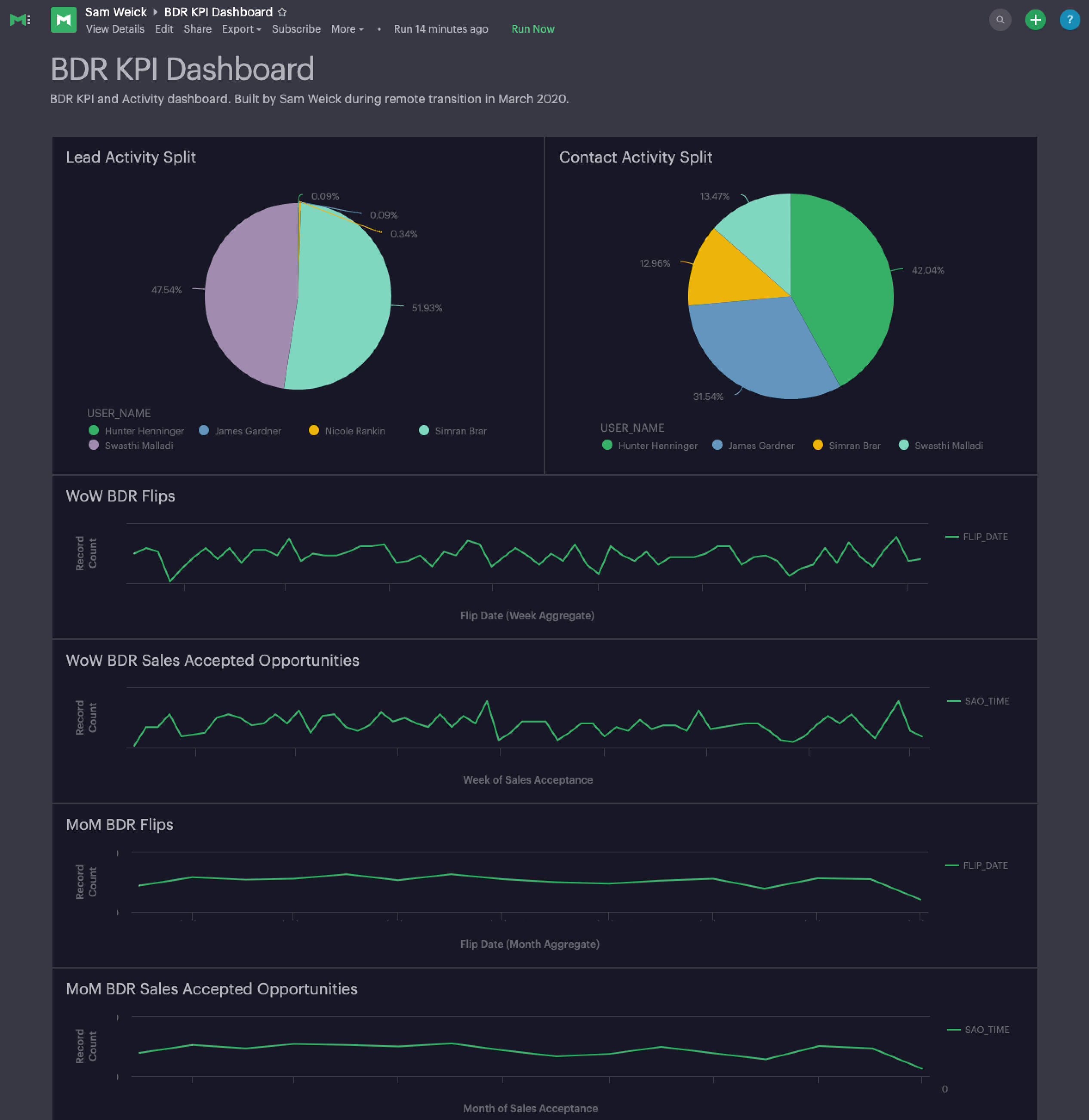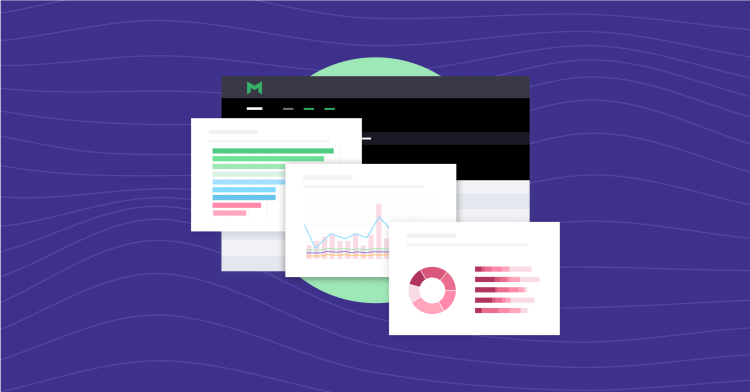Note: Mode is free to any researcher or organization working with public health or epidemiology models. Same if you’re coordinating logistics for a food bank, or any org fighting #COVID19 from the front line. Send ’em here: hi@modeanalytics.com.
Two weeks ago today seemed nearly like a normal workweek. We were making customer visits in Toronto and New York, coordinating sales training across teams, and kicking off new sprints.
Then each day, with more coronavirus news, a few more people opted to work remotely. Or declined a business trip.
By Friday, our executive team was having an honest and direct debate about not whether to close the office, but when. Peer companies had confirmed cases. A state of emergency was declared in San Francisco, where our headquarters are located.
What we did to prepare for a completely remote workforce
The larger management team moved into action over the weekend. Our IT Support Assistant set up a system for equipment checkout, multiple zoom integrations, and an internal communications wiki. All managers put together an action plan to address needs, gaps, risks, and remediations to move their work remote—all while keeping teams from feeling isolating while moving fast to keep everyone safe. The finance team sorted out a budget diverting Mode’s daily lunch catering into employee stipends for home office setup, including essentials like desk gear, noise-canceling headphones, or even setting up a virtual address for LLC documentation if needed.
We all learned rapidly from the 16% of our 140 employees who’ve been living the #remotelife that routine, work/life separation (however you can structure it), and optimal desk setup are needed. Telecommuting recommendations started flying in, as did photos of pets and messy roommates.
As a company built to make decisions around quick use of disparate data, we knew the importance of metrics and progress.
Applying metrics to track progress
Groups like our growth team, half of which are newly hired BDRs and earlier on in their careers, were ready for the challenge.
Sam, our BDR team manager, knew that helping each other show progress and keep ahead of daily activities would be essential. That was at the core of the team’s transition plan. Using Mode, he stitched together multiple data sources to be able to move toward the same goal.
The combination of unified activity monitoring, digital accountability, and virtual togetherness processes allowed this largely non-remote group to transition eerily seamlessly into a remote workforce. And the components looked something like this:
BDR Remote Work Plan and Metrics
Full Plan Here
Activity Monitoring
-
Public dashboards and expected outcomes for work tasks: -
Emails & LinkedIn messages sent & related tasks completed or overdue -
Call tasks completed and overdue -
Contacts created & contacts active -
First meetings set -
Opportunities created -
Sales accepted opportunities -
Pipeline generated
Digital Accountability
- Digital, public commitment to weekly goals
(Set, logged in a doc and shared in Monday stand-ups)
- Digital, public logging of daily priorities supporting weekly goals
(Set, logged in Slack and shared in daily, morning stand-ups)
- Public performance tracking, as goals pertain to the above tracked KPIs
Virtual Togetherness
- Daily office hours, where the manager is available for the ad hoc questions that come up while working in the office
- Daily stand-ups to start the day off together
- Informal channels with polls, photos of hobbies, or contests to keep social cohesion during a time of social distancing

7 Tips we’ve learned in going fully remote
To make a long blog post short, here’s our top 7 learnings this week about transitioning a multi-city company to a fully remote workforce in 36 hours:
- Determine your decision-making framework for when to close the office as early as possible, and what guidance to use for re-opening.
- Tune your level of accountability not just for seniority of your role but in relation to your comfort with the change. How will you know tomorrow that today was a success?
- Create virtual ways to translate culture, for people to spend time together and share tips on how to replace in-person collaboration. We're exploring a range of virtual activities from daily team syncs to lunchtime watercooler chats.
- Know when to prescribe and when to allow autonomy to roll out changes fast and keep culture and alignment intact. Our execs met to review the initial rollout plan from Bailey, who leads our people team, and within 8 hours managers were collaborating. Our CEO led an all-hands the next business day.
- Develop dashboards to focus on progress and structure for the short and long term.
- Be ready to improvise and become available fast. Know that you can still pull the right people in quickly. We’ve started a best practice of launching a Zoom meeting as soon as the Slack back-and-forth gets too long.
- Remember that intent and tone are hard to read through the text of words alone. Study after study shows that body language conveys more than words. Stay on camera, assume best intent, and err on the side of over-explaining.
We’re still learning how each of us, individually and collectively, can best adjust to our fast transition to a distributed workforce. Are you at a startup, small business or larger company that’s making the rapid move to remote work? How are you adjusting and what are you learning day by day? Email us at hi [at] modeanalytics [dotcom] or Tweet us at @Modeanalytics!






